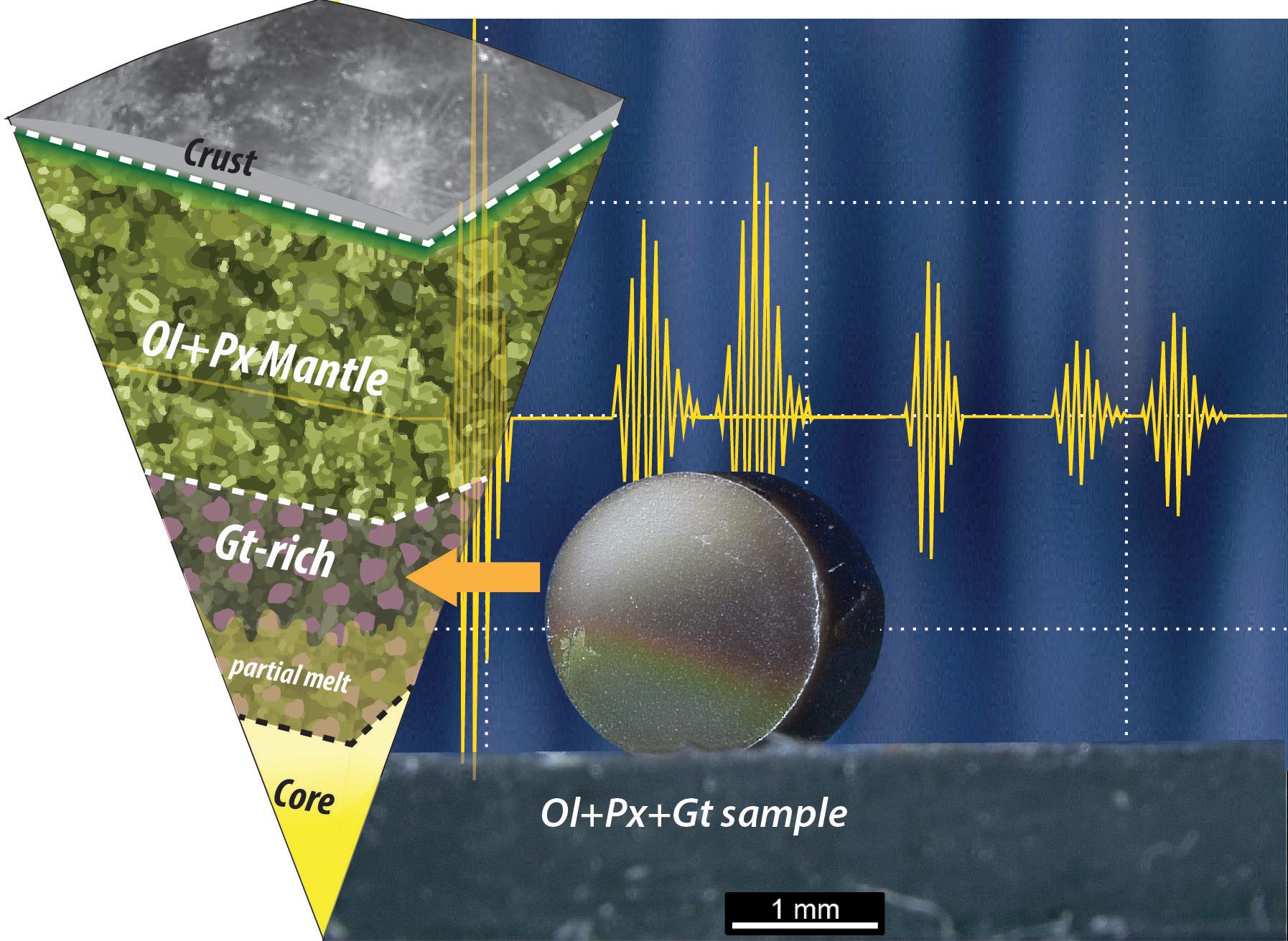Schematic representation of the Moon’s interior featuring a garnet-rich lunar mantle atop the core-mantle-boundary, and a picture of the synthetic lunar mantle aggregate investigated in this study. Credit: Geodynamics Research Center, Ehime University
Researchers synthesized garnet-rich lunar rock assemblages to determine if sound velocities in these compositions match seismic profiles of the Moon’s deep interior.
Using high-pressure experiments, they concluded that garnet presence is compatible with observed seismic data at depths of 740-1260 km, suggesting its significant role in the Moon’s structure and dynamics.
Moon’s Interior and Garnet Presence
Our present-day Moon has an interior structure containing a central metallic core, overlain by a mantle comprised of minerals such as olivine and pyroxene (e.g. Ol+Px mantle) underneath a shell of crust (e.g. Wieczorek et al. 2006). Such a picture of the Moon’s interior has been formed from analyses of returning lunar samples and records of deep seismic events collected during missions to the Moon (e.g. Weber et al., 2011).
Despite the wealth of literature, there is still a longstanding debate as to the existence of garnet (Gt) within the deeper part of the lunar mantle. Reflecting upon the existence of garnet, the pivotal question first posited fifty years ago (e.g. Anderson, 1975) has remained unanswered: are laboratory-measured sound velocities in realistic lunar aggregates containing garnet compatible with the seismic profiles of the deep lunar interior?
Research Methodology and Experimental Setup
To provide answers to this question Ehime’s researchers first synthesized garnet-rich lunar rock assemblages (Ol+Px+Gt sample) at high pressures and high temperatures using the multi-anvil press apparatus “ORANGE-2000” at the Geodynamics Research Center. These samples were then transported to DOI: 10.1016/j.epsl.2024.118792





















Discussion about this post